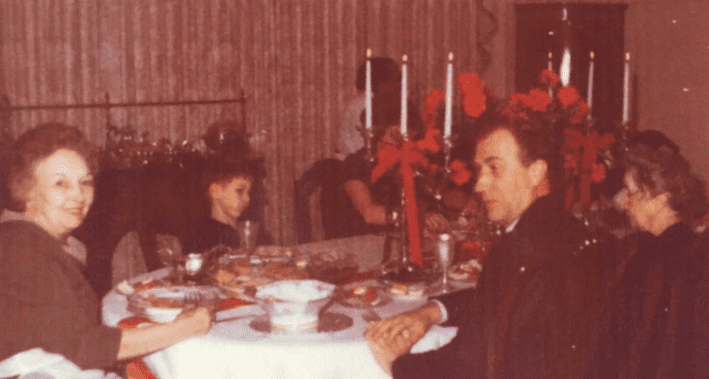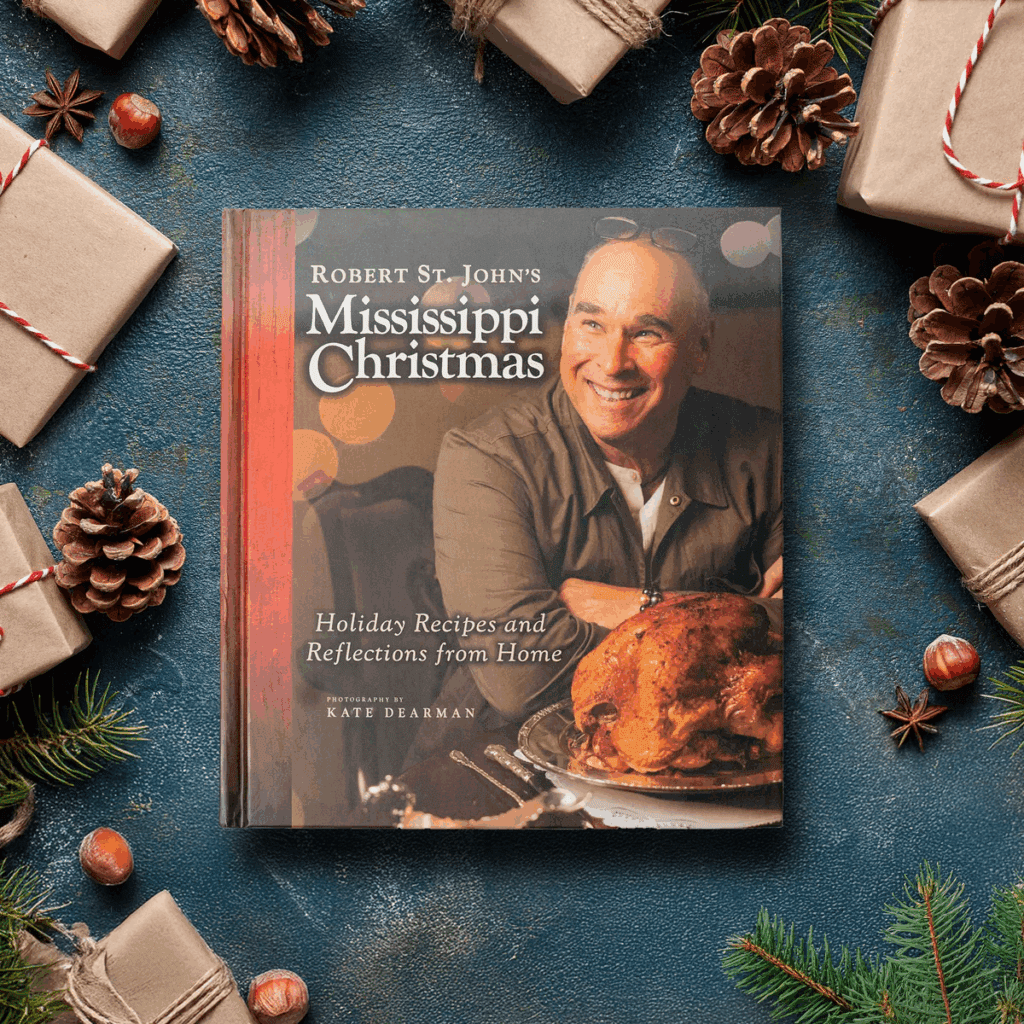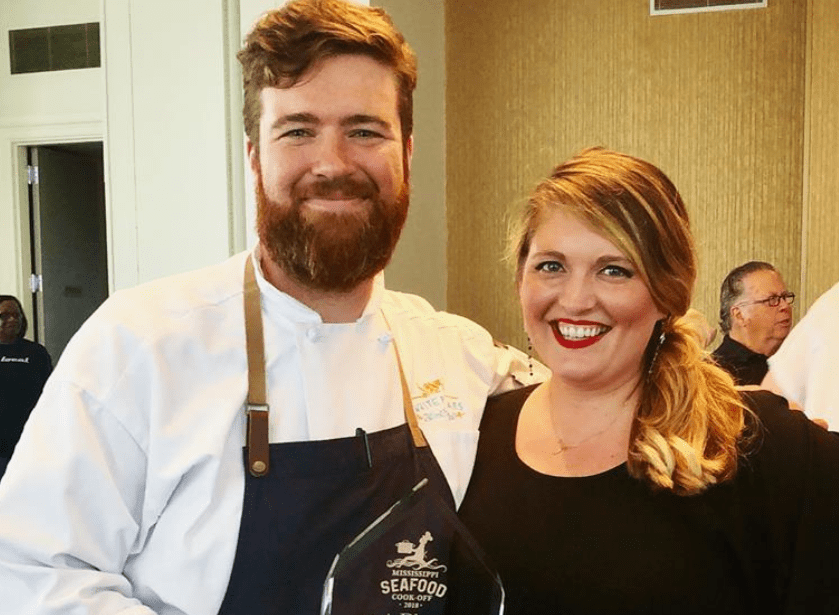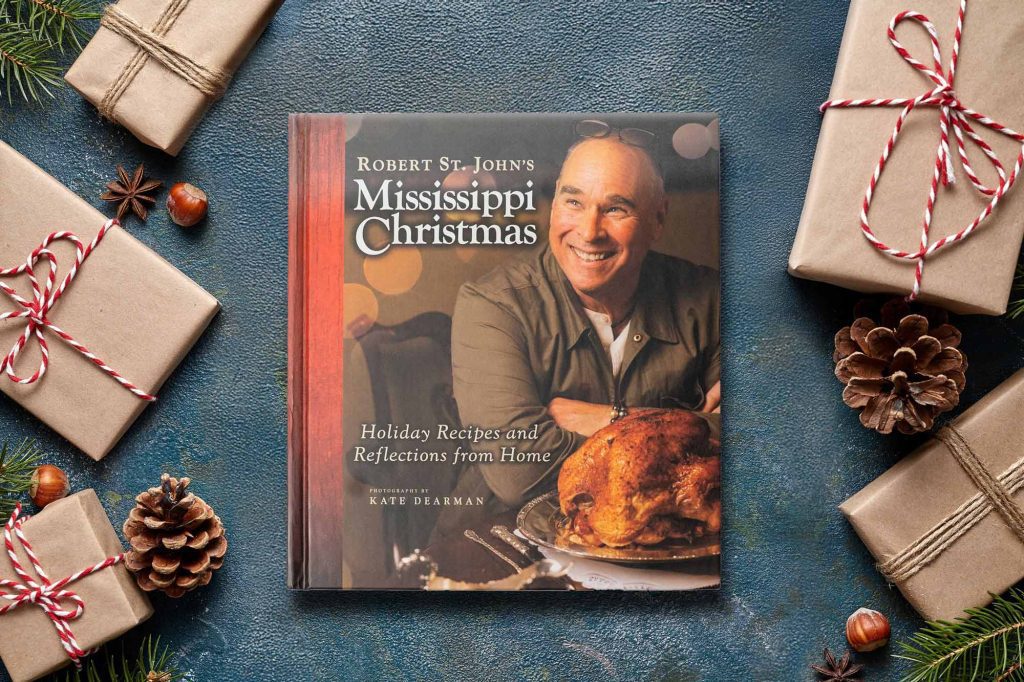
- St. John writes that he couldn’t have known it then, but the Thanksgiving meals at his grandmother’s house were teaching him more than table manners.
Thanksgiving never strutted in like Christmas; it just slipped through the door and made itself at home. At my grandmother’s house in Hattiesburg, the menu looked a lot like any Sunday after church—turkey, cornbread dressing, and enough warmth in the kitchen to heat the whole block. Back then, my main responsibility was to stay out of the way, which I accomplished with the kind of enthusiasm only a kid avoiding chores can muster. Still, the day felt different. More people showed up. The conversations lasted longer. I couldn’t have known it then, but those meals were teaching me more than table manners — they were showing me how folks are supposed to take care of each other.
Most of what stuck with me wasn’t the food, though her dressing set a standard I still chase. It was the simple rhythm of a family gathered around a table, talking over one another, laughing, staying long after the plates were cleared. Nothing about it seemed remarkable at the time. But those ordinary moments turned out to be the foundation of everything I value today—faith, family, friends, food, and the quiet kind of fun that doesn’t need to be manufactured.
It wasn’t until I held my own kids that all those old Thanksgivings finally made sense. Fatherhood has a way of turning you into the kind of person who cries at school programs and hoards sentimental objects you didn’t even know were sentimental. Watching my daughter find her eye for design and my son grow into a serious cook brought those Hattiesburg meals back with a clarity they never had in the moment. Thanksgiving now is less about what’s on the table and more about the people around it—seeing my children become who they’re meant to be and knowing those early lessons from my grandmother’s house didn’t end with me. They’re moving forward through them, and that’s something worth being deeply grateful for.
This recipe kicks ass. Made properly, it’s— what I believe to be— the best turkey gravy recipe on the planet. It’s from the new book, Robert St. John’s Mississippi Christmas.

Christmas Turkey
There’s nothing like a well-roasted turkey to anchor a holiday table, and no one made it quite like my grandmother. She didn’t wait until Thanksgiving to serve it. She’d roast a turkey once a month throughout the year, never mind the occasion. It was a staple at her table.
My mother, on the other hand, always made a formal Christmas Eve dinner, complete with turkey, dressing, and gravy. As kids, the excitement of Christmas Eve was almost too much to bear. Those big dinners felt like the beginning of Christmas itself. It’s a memory that comes to mind every time I cook a turkey or make gravy. And a good gravy can make or break the meal.
Making sure the roux browns just right and finishing the gravy with a touch of lemon juice or fresh herbs are tricks worth remembering. A little extra attention to the gravy goes a long way.
Serves 8 to 10
1 each 16-18 pound turkey, fresh or thawed
1 stick salted butter
3/4 cup chicken or turkey stock, slightly warm
2 tablespoons olive oil
3 tablespoons favorite poultry seasoning
1 tablespoon kosher salt
1 small onion, large dice
1 rib celery, 1/2-inch slice
1 Honey Crisp apple, 1-inch dice
Turkey Gravy – recipe follows
One day in advance: Remove the neck and giblets. Using a sharp knife, remove the wings (we’re going to use them for gravy). Store refrigerated overnight until ready to use. Dry the turkey well. Place the butter in a microwave-safe dish. Heat until the butter just begins to melt. Mix the butter and stock on low in a blender until emulsified. Inject the turkey thoroughly until all of the butter mixture is used up. Place the turkey in a roasting pan or on a platter and refrigerate uncovered overnight.
Pull the turkey two hours before roasting. The turkey will cook more evenly when allowed to sit out at room temperature before roasting.
Preheat oven to 325° F Rub the turkey with the olive oil. Combine the poultry seasoning and kosher salt. Rub the turkey with the seasoning. Stuff the cavity with the onion, celery, and apple. Tie the legs together with butcher’s string. Position a roasting rack inside a roasting pan. Place the turkey, breast-side-up on the roasting rack.
Roast for two hours then begin basting the turkey every 30 minutes until done. If the skin starts to get darker than you prefer, tent the turkey with foil. Roasting time will vary depending on the size of the turkey. As a general rule, the turkey needs to roast for 14 to 16 minutes per pound if pulled out two hours before roasting. A 16-to-18-pound turkey will take four to four and a half hours to cook. Remove from the oven when the turkey reaches an internal temp of 165° F.
Let the turkey rest for 30 minutes before serving.
Turkey Gravy
This gravy technique uses professional tricks to deepen flavor and ensure a smooth, luxurious consistency. Roasting the bones and deglazing the pan with white wine provides complexity, while a final touch of lemon juice brightens everything up. For best results, strain the gravy before serving.
Makes 2 1/2 cups
Preheat oven to 375° F
Neck and wings from turkey
1 small onion, diced
1 rib celery, diced
1 carrot, diced
3 cups turkey or chicken stock, heated
1/4 cup dry white wine (optional, but recommended)
3 tablespoons pan drippings or clarified butter
3 tablespoons all-purpose flour
11/2 teaspoons kosher salt
1/2 teaspoon fresh thyme, chopped
1/4 teaspoon sweet basil
1/4 teaspoon fresh lemon juice (to finish)
When you pull your turkey from the refrigerator to bring it to room temperature, start the gravy.
Place the turkey neck, wings, onion, celery, and carrot in a one and a half-quart oven-proof skillet or saucepot. Roast for 30 minutes then using tongs, carefully turn them. Return them to the oven and roast for 30 to 40 minutes, until golden brown.
Place the skillet or saucepot over medium heat and stir in the stock. Use a wooden spoon to scrape the bottom of the pan to release all the flavorful browned bits. Add the wine and bring to a simmer. Cook for 30 minutes.
Hold in a warm place while the turkey roasts.
Once the turkey has finished roasting and is resting, strain the stock through a fine-mesh strainer and discard the solids. Place the pan drippings or clarified butter in a small skillet over medium heat. Stir in the flour to make a roux. Cook for four to five minutes, or until it reaches a light caramel color.
Bring the strained stock to a boil over high heat. Carefully whisk in the roux and continue simmering for five minutes until thickened. Stir in the salt, thyme, sweet basil, and lemon juice. Taste and adjust seasoning if needed.
Serve warm.










